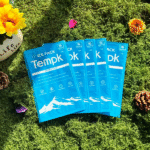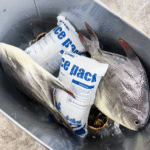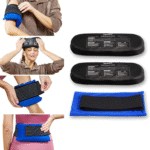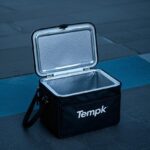Das Moderne Kaltkette Transport Der Sektor wächst schnell – im Wert von ca 371 Milliarden US-Dollar im Jahr 2025 und es wird erwartet, dass die jährliche Wachstumsrate im nächsten Jahrzehnt um 14–20 % steigen wird.
Für Fleisch, Die Einsätze sind noch höher: Ein einstündiger Ausflug über sichere Temperaturen kann die Bakterienzahl verdoppeln und die Haltbarkeit um 50 % verkürzen..
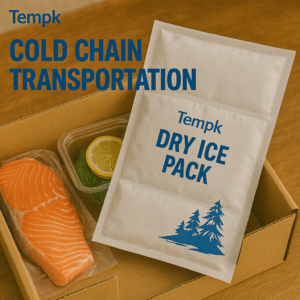
Kühlkettentransport – Ihre erste Verteidigungslinie
A. Kühlmodus (0 –4°C / 32 –39°F)
Ideal für frisches Rindfleisch, Schweinefleisch, Geflügel, und küchenfertige Produkte. Wenn man innerhalb dieses engen Bereichs bleibt, bleibt das pathogene Wachstum während typischer 24- bis 48-Stunden-Transitfenster unter kritischen Schwellenwerten.
B. Frozen-Modus (≤-18°C / 0 ° F)
Wird für Langstrecken- oder Inventaraufbauten verwendet (Z.B., Schweinefleisch exportieren, gefrorener Fisch). Die USDA-Richtlinien erfordern das Erreichen interner Produkttemperaturen 0 ° F (-17,8°C) oder weniger innerhalb von 72 Stunden nach dem Betreten eines Gefrierschranks und bleiben dort bis zur Lieferung.
| Versandtyp | Zieltemp | Typische Haltbarkeitsdauer | Hauptrisiko bei Verstoß |
|---|---|---|---|
| Frisch/gekühlt | 0 –4°C | 5–7 Tage | Beschleunigtes Bakterienwachstum |
| Gefroren | ≤-18°C | 6–12 Monate | Texturverlust, Gefrierbrand |
Vakuumverpackung + Kühlkette = Haltbarkeitsmultiplikator
Luft entfernen Reduziert die Sauerstoffbelastung um bis zu 95 %, Verlangsamung der Oxidation und mikrobiellen Aktivität. Kombiniert mit Kühlkettentransport, vakuumverpacktes Rindfleisch ist haltbar 50–100 Tage im Vertrieb.
Schneller Tipp: Drucken Sie „Verpackungsdatum+Verwendbar bis“-Aufkleber, um den Empfängern zu helfen, den Lagerbestand zu wechseln, ohne Kartons öffnen zu müssen.
Speziell gekühlt & Gefrorene Fahrzeuge
-
Kühleinheiten mit Direktantrieb (am besten für urbane Drops; schnelles Abkühlen).
-
Multi-Temp-Anhänger mit beweglichen Trennwänden für Mischladungen.
-
Telematiksensoren Übertragung von Temperatur- und Türöffnungswarnungen in Echtzeit an die Cloud.
A 2024 Die Prüfung ergab, dass Flotten, die Live-Telematik nutzen, die Temperaturschwankungen um ein Vielfaches reduzierten 32 % im Vergleich zur manuellen Protokollierung.
Hygiene & Vorschriftenregulierung
-
Anhänger wöchentlich desinfizieren; Waschmittelwäsche vorschreiben + 140 °F spülen.
-
EU 2024/1141: Trocken gereiftes Fleisch muss bei –0,5–3 °C und ≤85 % relativer Luftfeuchtigkeit transportiert werden.
-
FSIS-Ready-To-Cook-Regel: Gefrorenes Geflügel darf vor der Verarbeitung nicht mehr als einmal eingefroren werden.
Bei Nichtbeachtung einer der oben genannten Maßnahmen besteht die Gefahr eines Anfalls, Geldstrafen, und öffentliche Rückrufe.
Schnelle Transportstrategien
-
Cross-Docking-Hubs unter 30min Verweilzeit.
-
Luftfracht-Kühlboxen für Premium-Kürzungen – erhöht die Kosten, spart aber 48 Stunden bei der Seefracht.
-
Dynamische Routenplanung: Algorithmen, die den Verkehr umleiten, verkürzen die durchschnittliche Fahrzeit von Chill-Trucks seit Jahresbeginn um 12 % (Q22025).
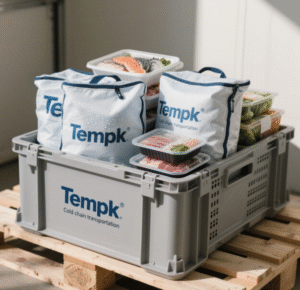
2025 FAQs
F1 – Was passiert, wenn mein LKW kurzzeitig 6 °C erreicht??
Dokumentieren Sie den Vorfall, Betroffene Paletten isolieren, und überprüfen Sie die Oberflächentemperaturen < 5°C innerhalb von 30min. Alles, was höher ist, erfordert eine QA-Überprüfung.
Q2 – Sind –15 °C gut genug für gefrorenes Fleisch??
NEIN. USDA- und EU-Benchmarks zitieren 0 °F/-18 °C als Obergrenze für Sicherheit und Qualität.
F3 – Benötige ich noch Gelpacks in einem Kühlanhänger??
Für gemischte Ladungen oder Übergaben auf der letzten Meile, Ja – besonders im Sommer, wenn die Türzyklen stark ansteigen.
Schlüssel zum Mitnehmen
Ein robuster Kaltkette Transport Plan – verstärkt durch Vakuumverpackung, zertifizierte Fahrzeuge, strenge Hygiene, und Geschwindigkeit – hält Fleisch sicher, konform, und marktreif. Führen Sie das obige Audit durch, Bleiben Sie dran für die Weiterentwicklung 2025 Vorschriften, und Ihre Sendungen werden in erstklassigem Zustand ankommen und gleichzeitig die neuesten SEO-Signale für Fachwissen erfüllen, Frische, und Engagement.
















